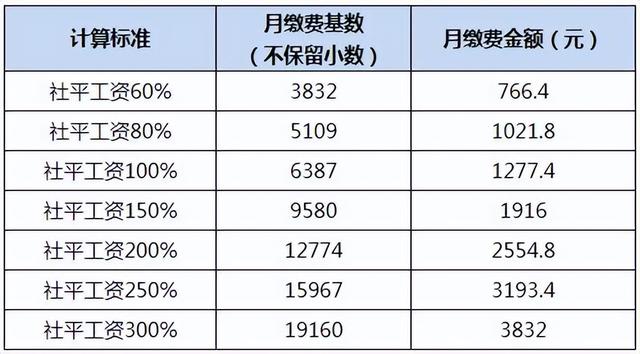筛骨是什么样子的骨头(基础筛骨解剖基础知识学习)
筛骨解剖学习难在筛骨非常脆弱,以至于大部分颅骨标本中的筛骨都被破坏。其中筛窦的复杂性让我们对筛骨的理解总是一头雾水,作为神经外科医生在这方面知识更是欠缺,近一周对筛骨基础解剖进行梳理,分享出来大家一起探讨学习。
筛骨(Ethmoid Bone)解剖基础知识
筛骨是位于两个眶腔之间的非成对的易碎骨(The ethmoidis an unpaired fragile bone located between two orbital cavities)。筛骨之所以这样命名,是因为它具有一个呈筛子一样(sieve-like)的多孔骨板,即筛板(cribriformplate)(在希腊语中,ethmoid=筛子状)。
筛骨是额骨筛切迹内的一块非成对骨。(Osethmoidale. Unpaired bone in the ethmoid notch of the frontal bone.)

一、分部(parts)
The ethmoid bone consists of the following parts:
- 筛板(Cribriform plate)
- 鸡冠(Crista galli)
- 垂直板(Perpendicular plate)
- 迷路(labyrinths)

二、筛骨各部特征:
(一)筛板(CribriformPlate = Lamina cribrosa)
- 筛板填充额骨的两块眶板之间的筛切迹(ethmoidalnotch between the two orbital plates of the frontal bone).
- 将鼻腔(nasal cavities)与前颅窝(anteriorcranial fossa)分开。
- 筛孔(foraminacribrosa),嗅神经丝(filaments of olfactorynerve)从鼻腔的嗅上皮传递通过筛孔到大脑的嗅球(olfactory bulb of thebrain)。


(二)鸡冠(CristaGalli)
- 鸡冠是筛板上表面的一个三角形正中嵴(triangularmedian crest)。它类似于鸡头上的鸡冠——公鸡头上红色的肉质生长,大脑镰(falx cerebri)的前端附着于此。
- 鸡冠翼(Ala of cristagalli)。呈翼状,它是连接鸡冠和额嵴的成对突起(pairedprocess for connection of the crista galli to the frontal crest.)。

(三)垂直板(PerpendicularPlate)
1. 从筛板下表面向下伸出的四边形板(quadrilateralplate)。它形成鼻中隔(nasal septum)的上部。

2. 筛骨垂直板与周围颅骨的关系:
- Anterior——鼻骨(nasal bone)、额骨鼻部
- posterior——蝶骨体的蝶骨嵴(sphenoidal crest)
- inferoanterior——鼻中隔软骨
- inferoposterior——梨骨(vomer)

(四)迷路(Labyrinths)
筛骨迷路是充满气房(air cells)的长方形骨盒子(cuboidal bonyboxes)。筛骨迷路(Labyrinthus ethmoidalis)是位于眼眶(orbital)和鼻腔(nasalcavities)之间的筛窦气房(ethmoidal air cells)的总称,其内壁面向鼻腔,外壁面向眼眶,后接蝶骨体的蝶窦前壁,前接鼻骨。
1. 筛骨迷路的面(surfaces):
(1)lateral surface
- 迷路的外表面构成眶内侧壁(The lateral surfaces of the labyrinth forms the medial wall of the orbit)。即筛骨眶板(Orbital plate)或称为筛骨纸样板(lamina papyracea)。
- 筛骨纸板周围结构:①额骨筛切迹(Ethmoidal notch of frontal bone)、②腭骨眶突(Orbital process of palatine bone)、③上颌骨眶面(Orbital surface ofmaxilla)、④泪骨(Lacrimal bone)。


(2)medial surface
筛骨迷路的内侧面构成鼻腔外侧壁(medial surface forms the lateral wall of the nasal cavity)。内侧壁上的结构包括:①上鼻甲和中鼻甲,最上鼻甲;②上鼻道、中鼻道,还有最上鼻道;③钩突、漏斗、筛泡。
- 迷路内表面的两个架子状突起称为上鼻甲和中鼻甲(The two shelf-like projections from the medial surface are called superior and middle conchae)。气化的中鼻甲称为泡状鼻甲(concha bullosa)。注:下甲是一个独立的骨。
- 鼻甲通过“板层(lamella)”附着在筛窦复合体(ethmoid complex)上。中鼻甲板层(middle turbinate lamella)是最复杂、最重要的解剖结构。它有一个S形的附着缘(S-shaped attachment),可以分成三部分(图4.1b)。①前三分之一:位于轴面(axial plane)上,附着于鼻腔外侧壁。②中三分之一:位于冠状面(coronal plane)上,被特别称为“基板(basal lamella)”。③后三分之一:位于轴面(axial plane)上,与纸样板(lamina papyracea)相连,直到腭骨垂直板(perpendicular plate ofthe palatine bone)。
- 鼻甲下方空间称为“鼻道(nasal meatus)”(分别为上、中、下)。①下鼻道(inferior nasal meatus)经鼻泪管(nasolacrimal duct)引流泪囊(Lacrimal sac)。②上和最上鼻道(superior and supreme nasal meatus)引流后筛气房(posterior ethmoid cells)。③中鼻道(middle nasal meatus)引流额窦(frontal sinus)、上颌窦(maxillary sinus)和前筛窦(anterior ethmoid sinuses),这个共同的引流空间被称为“骨道复合体(osteo meatal complex)”。
- 中鼻道(middle nasal meatus)内的主要结构为:①钩突(uncinate process)、②筛泡(ethmoid bulla)和③筛漏斗(ethmoidal infundibulum)。
- 钩突(Uncinate process or Processus uncinatus):从筛骨向后下方延伸的钩状突起(Hooklike process)。是一个薄的,矢状方向的飞镖形骨(boomerang-shaped bone),附着于前方的泪骨和下方的下鼻甲(图4.1a)。最重要的是,它的附着可以根据前筛气房的气化程度而改变。它几乎完全被中鼻甲(middle nasal concha)所掩盖,钩突的后游离缘(posterior unattached margin)形成沟通筛漏斗和中鼻道的半月裂孔(hiatus semilunaris)。
- 筛骨漏斗(ethmoidal infundibulum):为一狭窄的长圆形管,位于中鼻甲下方,钩突和筛泡之间。它是引流额窦、筛前气房和上颌窦的三维空间(three-dimensional space)。①前界——鼻丘气房(aggar nasicells)和额筛气房(frontoethmoidal cells)。②内界——钩突(uncinate process)。③后界——筛泡(bulla ethmoidalis)。④外界——纸样板(lamina papyracea)。

2. 筛窦
(1)筛窦(ethmoid sinuses)是鼻窦中变化最大的,由筛骨气化(pneumatization of the ethmoid bone)发展而来。气化有时可以延伸到筛骨以外,这些气房通常用特定的术语命名:
- 眶上气房(supraorbital cell)——气化到眶骨(orbit bone)
- Haller气房(Haller cell)——气化到上颌窦顶(roof of themaxillary sinus)
- 额筛气房(frontoethmoidal cell)——气化到额窦底(floor of the frontal sinus)
- Onodi气房(Onodi cell)——气化到蝶窦上外侧(superolateralto the sphenoid sinus)
(2)筛窦边界:
- Laterally——纸样板(lamella papyracia)
- Superiorly——前颅底(anterior skull base),筛骨顶向内和后方倾斜。内侧形成筛窦中央凹和筛板。
- Medially——鼻甲的垂直板(vertical lamella of the turbinates):中鼻甲(middle nasal concha)在前,上或最上鼻甲(superior orsupreme nasal concha)在后。
- Posteriorly——筛骨后部与蝶骨融合,蝶窦形成筛窦的后边界。
(3)筛窦被骨间隔(Bony septae)分成多达18个气房。筛窦的气房(air cells)按其位置分为三组。
- anterior ——可多达11个气房(consisting of up to 11 cells)——开口于中鼻道(middle meatus)的半月裂孔(opens in thehiatus semilunaris)。
- middle ——有1-3个气房,通常为3个。(consisting of 1–3, usually three cells)——开口于中鼻道(middle meatus)的筛泡表面(opens on the surface of bull ethmoidalis)。
- posterior ——有1-7个气房(consisting of 1–7 cells)。——开口于上鼻道的后部(posterior part of superior meatus)。



- 鼻丘气房(agger nasicell):是所有筛窦气房中最前和最恒定的,98%的患者可见鼻丘气房。它位于中鼻甲前上方(图4.1c)。它形成漏斗(infundibulum)和额隐窝(frontal recess)的前界,是识别额隐窝的重要标志(important landmark)。
- 筛泡(ethmoid bulla):是最突出的前筛气房,很容易在钩突后面识别。从侧面看,它附着在纸样板上。

三、clinical correlation
头部损伤时,鼻腔有血性脑脊液(blood-staineddischarge of CSF)流出,即脑脊液鼻漏(CSF rhinorrhea),提示前颅窝筛板骨折。由于嗅觉神经受损,可能导致嗅觉丧失。
参考资料:
1、《Clinical Head and NeckAnatomy for Surgeons by Peter A. Brennan, Vishy Mahadevan, Barrie T. Evans(eds.) (z-lib.org)》
2、《textbook of anatomy:head, neckand brain, second edition》
3、《Sobotta Atlas of Human Anatomy, Vol.3, 15th ed》
4、《Pocket Atlas of HumanAnatomy (4th ed.)》
5、《grant’s atlas of anatomy,14th edition》
6、网站:
https://www.anatomystandard.com/Cranium/Neurocranium/Ethmoid.html
,免责声明:本文仅代表文章作者的个人观点,与本站无关。其原创性、真实性以及文中陈述文字和内容未经本站证实,对本文以及其中全部或者部分内容文字的真实性、完整性和原创性本站不作任何保证或承诺,请读者仅作参考,并自行核实相关内容。文章投诉邮箱:anhduc.ph@yahoo.com






